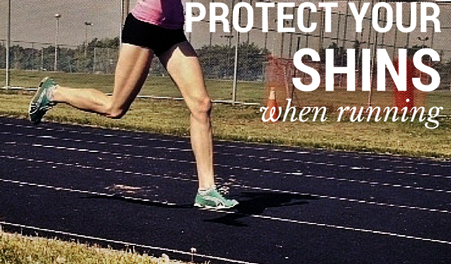
Noh et al. (2015) found that heel strike runners with shin splints had a reduction in ankle dorsiflexion, and more ankle plantar flexion upon landing, suggesting that the body reduces ankle dorsiflexion to stop the shin splints from getting worse.
In contrast, forefoot runners land with a plantar-flexed ankle which prevents weakness of the shin muscles by reducing muscle activity in the tibialis anterior.
Therefore, your shins are telling you to stop landing on your heels and instead use a forefoot strike by plantar-flexing your ankle at touchdown.
Need more details on what a forefoot strike looks like? Check this article.
The Real Cause of Shin Splints: Lengthened Ankle Dorsiflexion Time
A lengthened ankle dorsiflexion time at touchdown is a major cause of shin splints in runners, particularly heel strike runners.
More fundamentally, lengthened ankle dorsiflexion time increases the duration of eccentric contractions and muscle activity of the shin muscles.
The emerging consensus is that the longer the shin muscles contract at each step during running, the faster they fatigue, suggesting that switching to a more plantar-flexed ankle at touchdown seems like the next logical route to prevent early shin fatigue and therefore shin splints.
Moreover, adopting a plantar-flexed ankle at touchdown offers enormous benefits, aside from preventing shin splints, it improves ankle plantar flexor strength, allowing for better stability during the support phase, but it also facilitates a forefoot strike at touchdown (Gehlsen & Seger,1980).
Learn more about the health benefits of forefoot running here.
- Discover More Injuries Caused by Heel Striking
- Running Barefoot Also Prevents Shin Splints
- How to Start Running Forefoot
- Why Proprioception Matters
You May Also Like:
References:
Gehlsen, G. M., & Seger, A. (1980). Selected measures of angular displacement, strength, and flexibility in subjects with and without shin splints. Research Quarterly for Exercise and Sport,
51, 478 – 485.
Noh et al. Structural deformation of longitudinal arches during running in soccer players with medial tibial stress syndrome. Euro J Sport Sci, 2015;15(2):173-18.
Bretta Riches
BSc Neurobiology; MSc Biomechanics candidate, ultra minimalist runner & founder of RunForefoot. I was a heel striker, always injured. I was inspired by the great Tirunesh Dibaba to try forefoot running. Now, I'm injury free. This is why I launched Run Forefoot, to advocate the health & performance benefits of forefoot running and to raise awareness on the dangers of heel striking, because the world needs to know.
Latest posts by Bretta Riches (see all)
- How to Train Yourself to Not Heel Strike When Running - 24/04/2024
- Cushioned Running Shoes Found to Be Bad for Ankles - 23/04/2024
- Forefoot Running and Achilles Pain - 19/04/2024

Leave a Reply